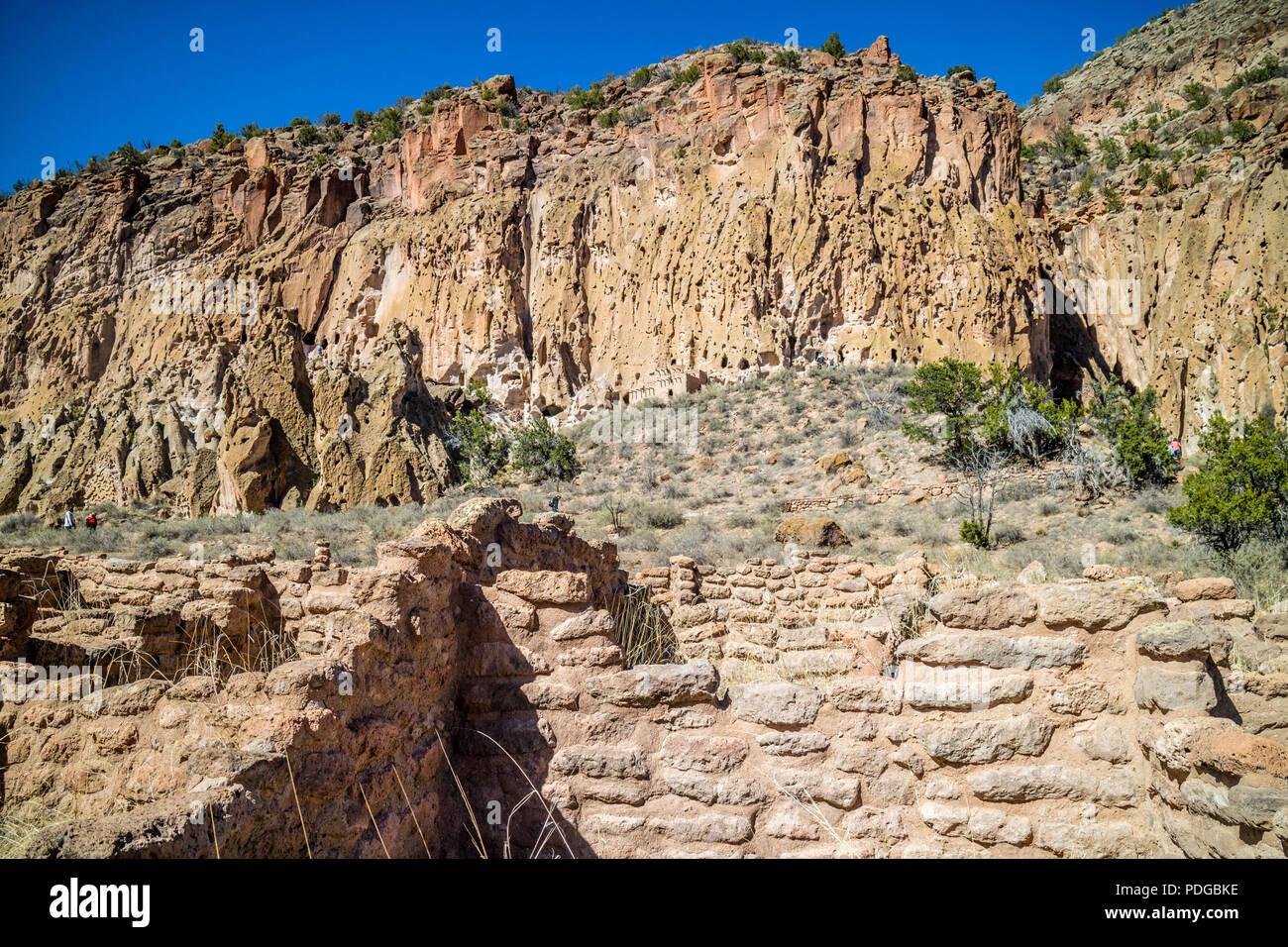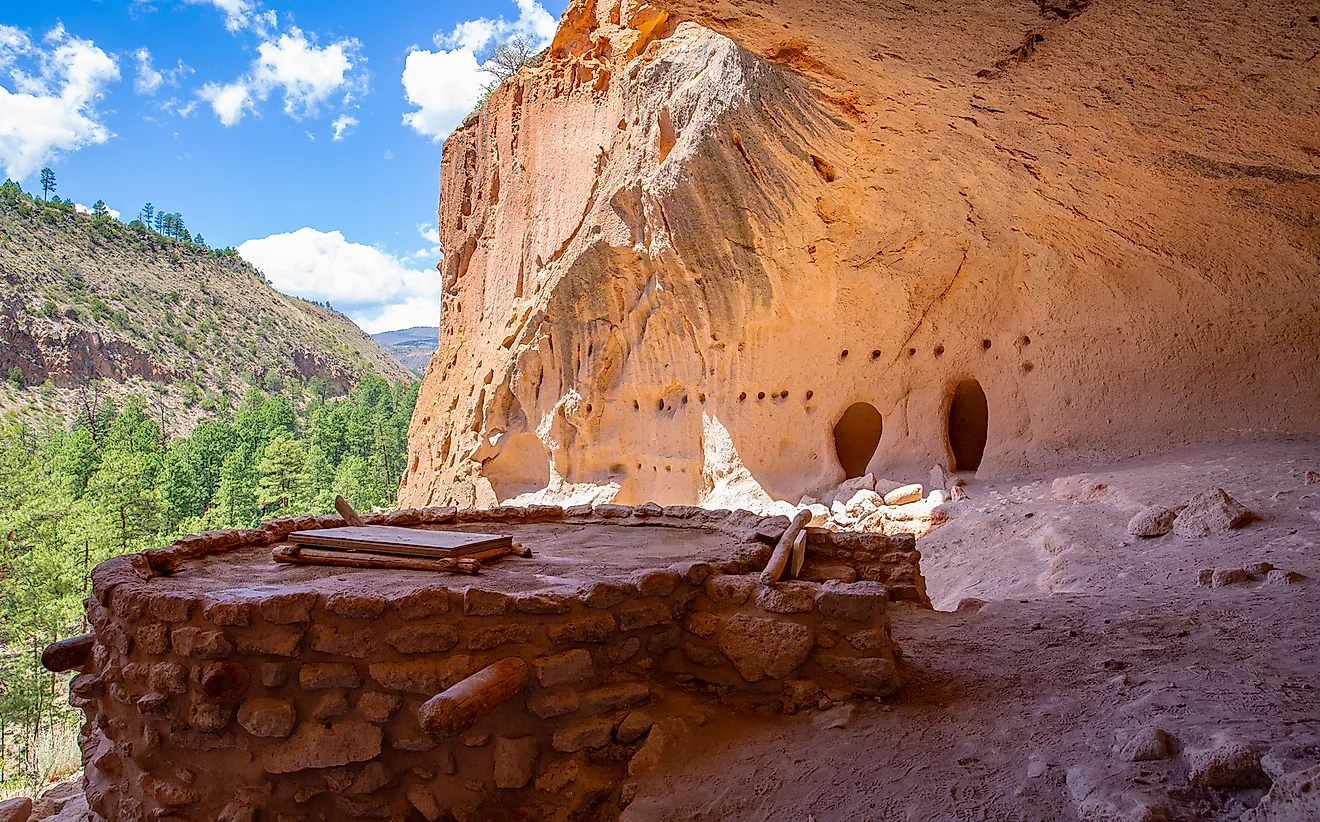![]()
Echoes in the Canyon: Unearthing the Enduring Legacy of Bandelier National Monument
The silence in Frijoles Canyon is not empty. It hums with the whispers of a thousand years, a gentle breeze rustling through ancient ponderosa pines that once sheltered a thriving civilization. Here, in the heart of northern New Mexico, lies Bandelier National Monument, a place where the past isn’t just preserved in stone but feels alive, palpable, just beneath the surface of the earth and etched into the volcanic cliffs. This is more than a collection of ruins; it is a profound testament to human ingenuity, spiritual connection, and an enduring mystery that continues to captivate all who walk its hallowed grounds.
Bandelier, encompassing over 33,000 acres, primarily safeguards the archaeological sites of the Ancestral Pueblo people, who made this rugged yet resource-rich landscape their home for centuries. Tucked away on the Pajarito Plateau, carved by the mighty forces of volcanic eruptions and subsequent erosion, the monument offers a unique glimpse into a complex society that flourished between approximately 1150 and 1550 AD. Their story, etched into the soft tuff cliffs and scattered across the canyon floor, is one of remarkable adaptation and a deep respect for the land.
The Ingenuity of the Ancients: Homes in the Tuff

The most striking features of Bandelier are undoubtedly the cliff dwellings and cavates. As visitors embark on the main loop trail, the sheer scale of human effort becomes immediately apparent. The Ancestral Puebloans, facing the challenges of a semi-arid environment, didn’t just build on the landscape; they built into it. The Pajarito Plateau is composed of ignimbrite, a relatively soft volcanic rock formed from the ash and pumice of the massive Valles Caldera eruption roughly 1.2 million years ago. This soft tuff proved ideal for carving.
"Imagine the sheer effort," marvels Dr. Elena Ramirez, an archaeologist specializing in Southwestern cultures, during a recent visit. "They didn’t have steel tools. They used harder stones, obsidian, and wood to painstakingly hollow out these natural alcoves and create artificial cave dwellings, or ‘cavates.’ It speaks volumes about their determination and their understanding of their environment."
These cavates often served as single rooms, sometimes connected to larger, multi-storied structures built on the talus slopes directly below the cliffs. These "talus villages" combined the protection of the cliff overhangs with the practicality of adobe and stone construction. The roofs of the lower rooms often formed terraces for the dwellings above, creating a cohesive, multi-level community that mirrored the natural contours of the canyon. Wooden ladders, likely made from ponderosa pine, would have connected these levels, much like the ones visitors use today to ascend into some of the more accessible cavates. Stepping inside, one is immediately struck by the coolness of the rock, a natural air-conditioning system against the New Mexico sun, and the faint scent of millennia. Smoke stains on the ceilings hint at the countless fires that once warmed these homes.
Tyúonyi: The Heart of the Community
While the cliff dwellings capture the imagination, the true heart of the Bandelier community lay on the canyon floor: Tyúonyi Pueblo. This large, circular communal dwelling, built of tuff blocks and adobe mortar, once stood up to three stories high and contained hundreds of rooms. It housed a significant portion of the population, perhaps several hundred people, suggesting a complex social organization and a highly communal way of life.
The central plaza of Tyúonyi would have been a vibrant hub of activity – pottery making, food preparation, social gatherings, and ceremonial dances. The strategic location of the pueblo, just yards from the perennial Frijoles Creek, provided a consistent water source, crucial for both daily life and their sophisticated agricultural practices. The Ancestral Puebloans were skilled farmers, cultivating corn, beans, and squash on the fertile canyon floor, supplementing their diet with wild game and edible plants gathered from the surrounding plateau.
Scattered throughout Tyúonyi and the surrounding area are numerous kivas. These circular, subterranean structures were not dwellings but sacred ceremonial spaces, vital to the spiritual life of the community. The Great Kiva, located near Tyúonyi, is particularly impressive. Its larger size suggests it may have served as a central gathering place for the entire community, hosting important rituals, councils, and celebrations that bound the people together. The deep spiritual connection of the Ancestral Puebloans to their land and cosmos is evident in these structures, designed to connect them with the earth and the heavens.
Messages in Stone: The Petroglyphs

Beyond the architectural marvels, Bandelier also offers glimpses into the artistic and communicative expressions of its ancient inhabitants through its extensive collection of petroglyphs. Carved into the dark volcanic rock, these images depict a range of subjects: human-like figures, animal tracks, spirals, handprints, and geometric designs. While some may represent clan symbols or territorial markers, many are believed to hold deeper spiritual or ceremonial significance.
"These aren’t just doodles," explains a National Park Service ranger during an interpretive talk. "Each carving likely carried meaning, a story, a prayer, or a record of an event. They are direct messages from the past, inviting us to try and understand the worldview of the people who created them." The "Falls Trail" offers particularly rich viewing opportunities for these ancient rock art panels, a silent gallery of a lost language.
The Landscape: A Force of Nature and Nurture
The very existence of Bandelier is intrinsically linked to its dramatic landscape. Frijoles Canyon, with its steep, wooded sides and flat, fertile bottom, provided a unique microclimate. The canyon walls offered shelter from harsh winds and extreme temperatures, while the creek ensured a consistent water supply. Above the canyon, the Pajarito Plateau stretches out, covered in dense forests of Ponderosa pine, Douglas fir, and piñon-juniper, providing timber for construction, fuel, and a rich source of nuts and berries.
This rugged beauty is a direct consequence of the region’s fiery past. The Valles Caldera, one of the world’s largest volcanic craters, dominates the skyline to the west. Its immense eruption left behind the thick deposits of volcanic tuff that the Ancestral Puebloans so skillfully manipulated. This geological legacy is not just a backdrop; it is the very material from which their civilization was sculpted.
Adolph Bandelier: The Man Behind the Monument
The modern understanding and preservation of these sites owe much to the pioneering work of Adolph Bandelier. A Swiss-American anthropologist, Bandelier arrived in the American Southwest in the late 19th century, driven by an insatiable curiosity about the region’s ancient cultures. From 1880 to 1886, he meticulously surveyed and documented the ruins of the Pajarito Plateau, often living amongst contemporary Pueblo people to gain a deeper understanding of their traditions and history.
His extensive fieldwork, detailed maps, and insightful analyses provided the foundational knowledge for future archaeological endeavors. His most famous work, The Delight Makers, published in 1890, was a fictionalized account of Ancestral Pueblo life on the Pajarito Plateau, drawing heavily on his research and bringing these ancient people to life for a wider audience. It was largely through his tireless efforts and advocacy that the significance of these sites became widely recognized, leading to their protection. In 1916, President Woodrow Wilson designated the area as a National Monument, honoring Bandelier’s profound contributions.
The Enduring Mystery and Modern Relevance
Around 1550 AD, the Ancestral Pueblo people of Bandelier began to leave their canyon homes. The exact reasons for their departure remain a subject of scholarly debate, but a combination of factors is generally believed to have played a role. Prolonged droughts would have strained their agricultural resources, making sustained life in the canyon increasingly difficult. Resource depletion, particularly of timber, and possibly social or religious reasons may have also contributed. Many of the inhabitants are believed to have migrated eastward, eventually settling in the Rio Grande Valley, becoming ancestors to today’s Cochiti and San Ildefonso Pueblos, among others. Their descendants maintain deep spiritual and cultural ties to Bandelier, considering it a sacred ancestral homeland.
Today, Bandelier National Monument serves as a vital bridge between the past and the present. For visitors, it’s an opportunity for quiet contemplation, physical exploration, and a profound connection to a bygone era. Climbing the ladders, peering into the ancient dwellings, and walking the same paths as those who lived here centuries ago evokes a powerful sense of wonder and humility. The sheer scale of their achievements, their resilience, and their harmonious existence with a challenging environment offers invaluable lessons for contemporary society.
The monument faces ongoing challenges, including the impacts of climate change, increasing visitor numbers, and the ever-present need for careful preservation. The devastating Las Conchas fire of 2011, which burned through much of the monument, highlighted the fragility of these cultural landscapes, yet also demonstrated the resilience of the ecosystem and the ongoing commitment to protecting these irreplaceable treasures.
As the sun sets over Frijoles Canyon, casting long shadows across the ancient walls, the whispers seem to grow louder. They speak of a people who lived, loved, toiled, and worshipped in this dramatic landscape. Bandelier National Monument is not just a place to observe history; it is a place to experience it, to feel the echoes of ingenuity and spirit that still resonate from the ancient stones, reminding us of our shared human story and the timeless power of place.


